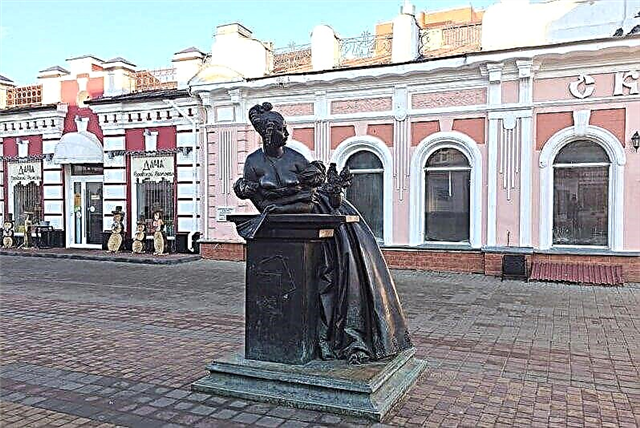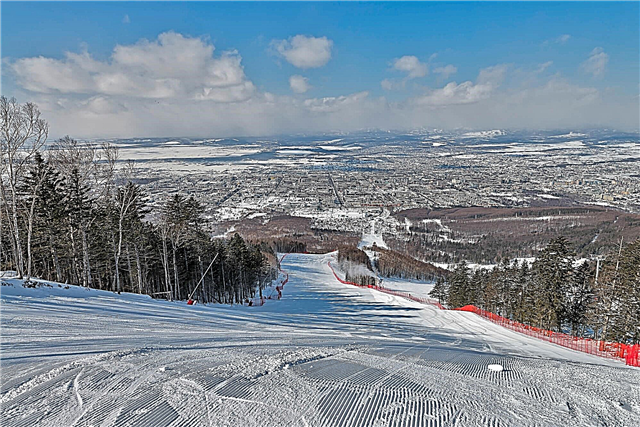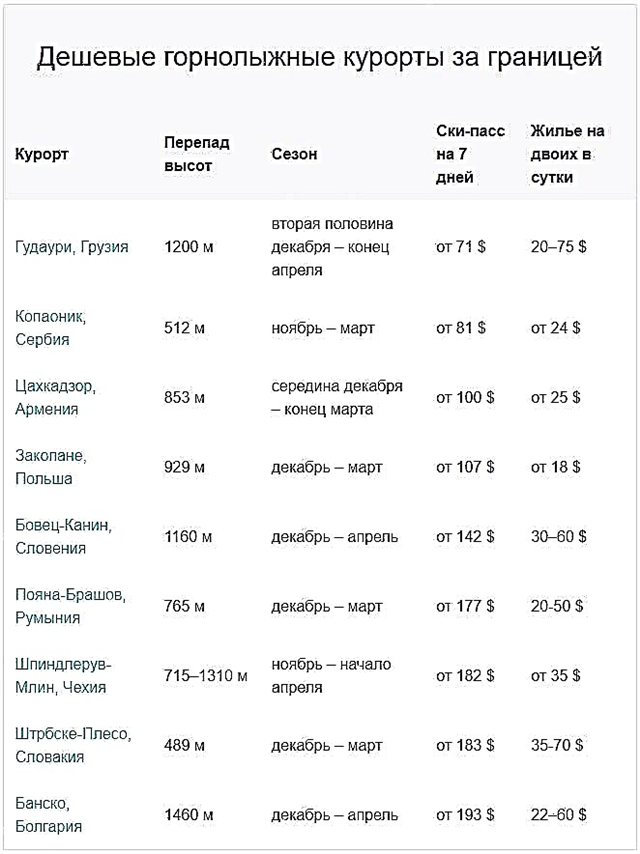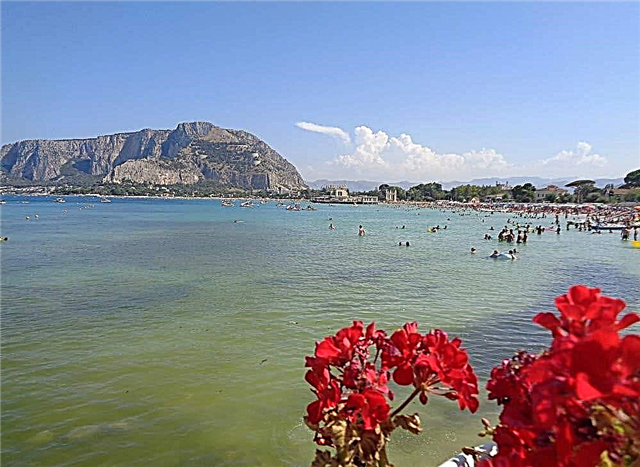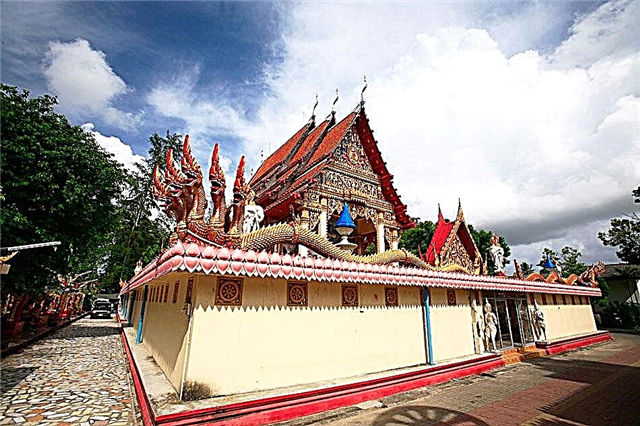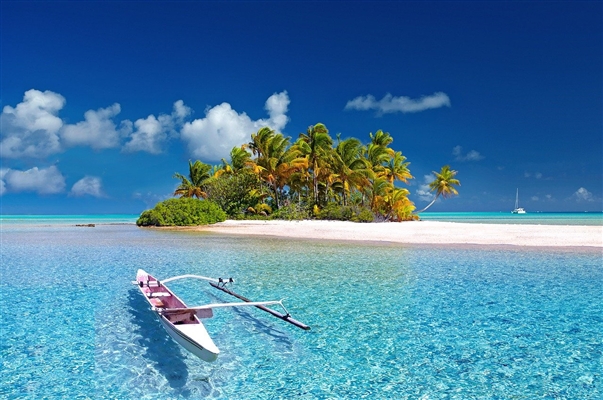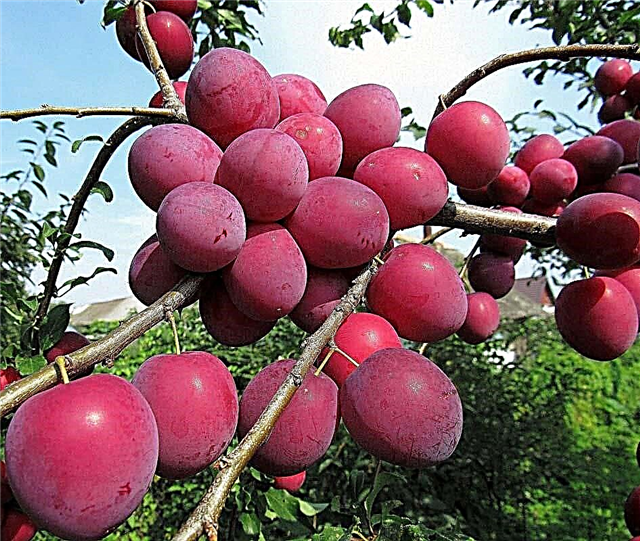Abkhazia is rich in exotic fruits. Tourists come to rest not only for a change of scenery and a beach holiday, but also for the health of the body. Here you can meet and taste all the fruits of the world, the main thing is to choose the right season for the upcoming vacation. So what kind of natural vitamins does hospitable Abkhazia meet with tourists not only from Russia.
Mulberry

The fruit list begins with the mulberry tree, which ripens in early spring. Outwardly, they resemble blackberries, have a delicate pulp and a pleasant aroma. Alas, you cannot take such exotic fruits home to your homeland, since the skin quickly withers, and the mulberry itself loses its taste.
Advice: it is recommended to buy and consume black mulberry, green varieties give a pronounced sourness.
Dogwood

This is a summer berry, of which there are about 50 varieties in Abkhazia. The fruits are red, oblong, tart and very healthy. In its raw form, dogwood is not for everyone, it is more often used for making desserts and drinks, sauces and other dishes. If the fruits are slightly dried, you can bring them home from vacation. The usefulness of the red fruit is not reduced by this.
Medlar

The season for this yellow fruit starts at the end of May, and already in June the medlar floods the local markets. Outwardly, the fruits resemble an elongated pear of a rich orange color, and in terms of taste - a mixture of quince, peach and strawberry. For local residents, growing medlar is the main source of income, for tourists it is an inexhaustible storehouse of vitamins.
Advice: the fruit is unpretentious, does not deteriorate during transportation, so it can be brought as a gift from rest.
Lavrovishnya (Abkhazian cherry)

This pink fruit is not for everybody's taste, it grows only in Abkhazia, and is more often used for medicinal purposes. Fresh fruits of a tree with lavrushka leaves are rarely used, they are often dried, and attract tourists as exotic dried fruits. Upon arrival in Abkhazia, it is worth trying cherry laurel once, but only to expand your horizons.
Cherries

On the market you can find several varieties at once, which differ not only in color, but also in taste. In the summer, cherries overwhelm the counters of local markets, and they give it away for a pittance.
Peaches

Abkhazian peaches are smaller in size than Turkish peaches, but they are in no way inferior in taste. The fruit is deep orange in color, soft when ripe, juicy in taste. Abkhaz peaches are sold in local markets, but also grow in parks, gardens, alleys. These fruits are available to tourists all summer long, by August they become noticeably cheaper.
Useful materials
- Food prices in Abkhazia this season
- We consider the cost of the trip as our own
- What to bring from vacation from souvenirs
Grape

The fruits contain many beneficial properties. In Abkhazia, there are several types of grapes, from which not only sweet desserts are prepared, but also used for distilling wine. Most often it is a purple fruit that is imported into the country from Moldova. Abkhazia lacks its own grapes, so it is not cheap at local markets. It is better to try other vitamins, but there is enough "imported good" in your city.
White fig

It is the sweetest fig variety available at an affordable price in the middle of summer. This tropical fruit has a dense skin and juicy pulp; it is not peeled before use. Taking home a few white fruits with black dots will also not work, since fresh figs quickly deteriorate. Alternatively, in Abkhazia, you can buy dried figs, an unforgettable delicacy.
Black fig

This fig variety has a distinct aroma, but a discreet taste. Gourmets lack sweetness and honey. However, black figs are equally beneficial for health, especially for strengthening the heart and cardiovascular system. It grows later, ripe fruits begin to appear on the shelves in early September.
Barberry

These are useful berries that grow on low bushes, and ripen by the beginning of autumn. Fresh, they have a specific taste, are often dried and used for making sauces, desserts and drinks. If you happen to be on vacation in Abkhazia, it is interesting to taste fresh barberry.
Nectarine

This tropical fruit appears in July. In size, taste and appearance, nectarine strongly resembles a peach, only not a hairy fruit, but a bald one. If you buy an unripe fruit, it tastes tart, hard, even bitter. It is recommended to wait until, when pressing on the skin, a small depression remains on the nectarine - a sign of ripeness.
Prunes

Before traveling to Abkhazia, it is recommended to familiarize yourself in detail with the exotic fruits of Asia with photos and names. And upon arrival, enjoy the specific taste of each. Prunes are no exception. It is customary to see this fruit dried, as dried fruit, but during a summer vacation in Abkhazia, you have the opportunity to taste fresh prunes. The taste is not much different, but there is more benefit to the body from ripe.
Blackberry

This tropical fruit ripens in July and is sold in stores until mid-September. Wild blackberries are small in size, while garden blackberries are larger. The fruits do not differ in taste, they are equally useful and attractive. Blackberries can be eaten fresh or added to jam, compote.
Feijoa

The specific name of the fruit, which is difficult to remember the first time. But the taste of feijoa is unforgettable. Fruits ripen in November, fall from a low tree to the ground. This means they can be eaten. But sellers like to remove them themselves from the branches that are not ripe, so you can sell them for longer. How to identify a ripe fruit? Firm and elastic on palpation, inside the flesh is slightly yellowish with a transparent thickened liquid.
Feijoa contains vitamin C and iodine, so the health benefits are hard to overestimate.
Persimmon
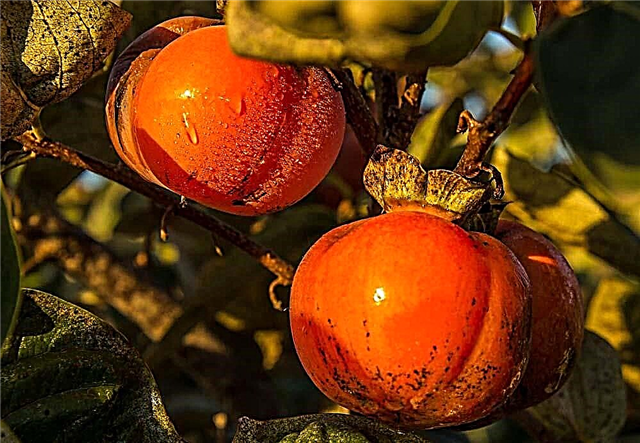
Another autumn replenishment of the "fruit basket". This orange fruit is eaten only when ripe and has a honey flavor. It has a dense skin and juicy flesh. If the persimmon is not ripe, it becomes tart, knits the tongue. This is a quickly perishable product that you cannot bring home from a trip. But you can stock up on unripe fruits that will come in warmth and are suitable for consumption. Especially tasty variety - "king". Dried persimmon wedges are also sold.
Useful materials
- TOP sights of Abkhazia
- How to get there easier - tips and nuances
- How to get to Lake Ritsa
Grapefruit

This is the first representative in the list of Abkhazian exotic fruits. Their photos with names and descriptions will help you make a choice, if you are confused in a wide range, evaluate the usefulness of properties in your case. Grapefruit - a source of vitamin C, reliable protection of the immune system. In Abkhazia, ripe and cheap fruits are sold in the fall, but are available all year round, starting in March. The fruit is not for everybody, sour and tart taste.
Pears

You can please yourself with ripe pears in September. Especially tasty varieties - Duchess, Veles, Severyanka and Marble. Fruits are small in size, dense in consistency, sweet in taste. In Abkhazia, even winter varieties of pears are grown, but they also cost an order of magnitude more expensive than the summer harvest.
Watermelon

Abkhazian watermelons are delivered to all corners of Russia, they attract with their juiciness, long shelf life, and taste. These are affordable and useful vitamins that go on sale from the second half of August. The Abkhazians are especially proud of the Bomba variety. The taste lives up to the name. Also on the list of overseas fruits is yellow watermelon.
Melons

These are Asian fruits that have successfully "migrated" to Abkhazia.On the shelves you can find early varieties "Ethiopka" and "Caramel", mid-season - "Kolkhoznitsa" and "Kantalupa", late - "Torpedo" and "Wintering". Such fruits look appetizing in the context, and the taste is unforgettable, especially in "Torpeda".
Kiwi
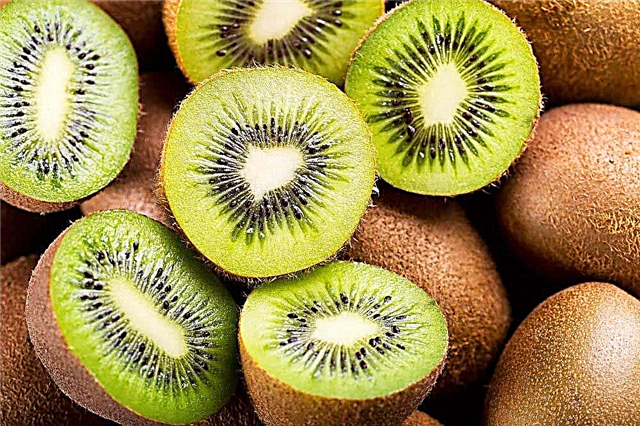
Abkhazia is famous for the kiwi variety called "Hayward", which is grown in every city and is famous for the best taste. Green fruit is sold at every step, in the season it costs "a penny". Sweet to taste, healthy by characteristics (source of vitamin C). This exotic fruit (the name of the locals is Chinese gooseberry) will surprise no one, although kiwi has only been grown in the republic since 1989.
Unshiu mandarin
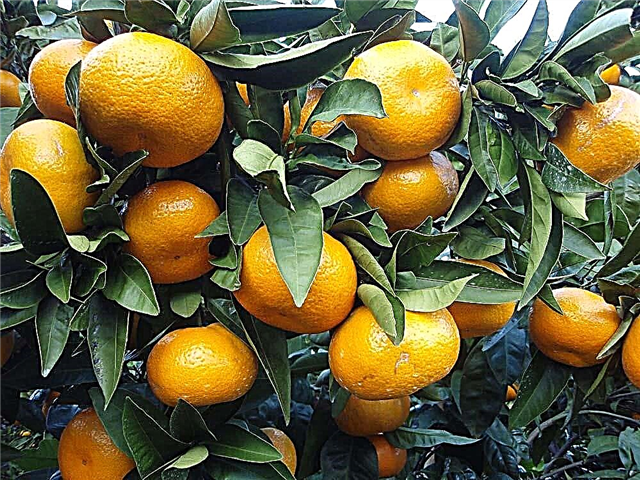
Tangerine trees in Abkhazia grow almost at every entrance, in alleys and in public gardens. The Unshiu tangerine is a thorny fruit, a "visiting card" of this hospitable country. Since the tree is unpretentious in care and maintenance, a rich harvest is guaranteed almost every year. Abkhaz tangerines are especially in demand on the eve of the New Year holidays. Nondescript, flattened, but juicy and easy to clean.
Meyer's lemon

This is a separate lemon variety that grows in Abkhazia. The juicy fruit has a round shape and a sweetish taste with a slight bitterness, and is smaller in size. The Meyer lemon blooms once a year and can be harvested in late fall. Such a fruit is worth more than the usual lemon, but for buyers it becomes exotic. Still, you don't taste sweet lemon every day.
Kumquat

This fruit is similar in taste to a tangerine, to a small orange in external characteristics. Kumquat is a native of China, more often consumed raw or used to decorate dishes on a festive table. The fruit is added to sauces and marinades, gives a spicy taste to meat and fish dishes.
Lime

It is a small green lemon that can be found on market stalls all year round. It tastes less sour than ordinary lemon, but it is also considered an inexhaustible source of vitamin C. It is stored for a long time, it is cheaper in Abkhazia. So you can take a kilogram home to increase immunity upon returning from vacation.
Oranges

This tropical fruit and name doesn't need much introduction. There are enough oranges on sale all year round, and Abkhazia is no exception. The winter months are the best time for healthy citrus fruits. In December-January, oranges fill the counters of local markets, and the fruits are not so expensive. The fruit is stored for a long time, over time it does not lose its beneficial properties.
Quince

The quince season starts in October. Thanks to long-term storage, you can find this fruit on sale all year round. Fresh quince is sour and tough, so it is more often used for making sauces and jams. In appearance it can be confused with yellow apples and pears.
Cherry plum

This is a plum-like fruit with a deep red or yellow color. Cherry plum is sour in taste, but fragrant, rich in vitamin C. The famous Georgian tkemali sauce is made from it. In Abkhazia, the fruits ripen in June, then appear on the shelves. Already in July, the cost of cherry plum drops to 30-40 rubles per kilogram.
Garnet

It is a rich red fruit that ripens in October-November. Local fruits are small, wrinkled and outwardly unattractive; to taste - juicy, sweet. Very often, Abkhazian traders prepare fresh pomegranate fresh juices for customers. This is a real "vitamin bomb" in the winter.
Blueberry

Abkhaz blueberries grow in the mountains and are very beneficial for vision and immunity. Since there are difficulties with picking berries, you rarely find it on the shelves of local markets, and such a delicacy is not cheap.
Butea capitate
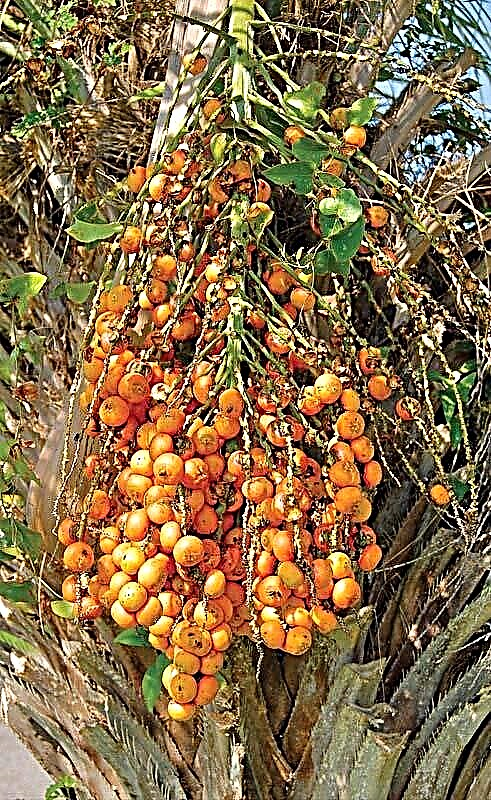
Such Vietnamese fruits in Abkhazia are mistakenly called dates. Fruits - juicy, with sweet and sour pulp, dense skin. The fruit resembles apricot in taste and cherry plum in size. Butiya hangs down with orange tassels and is considered the "visiting card" of Abkhazia.
Advice: the main thing is not to be confused with dates, which are not edible.
Now, knowing tropical fruits with photos and names, you can safely go to Abkhazia on vacation and arrange a real gastro tour for yourself.


